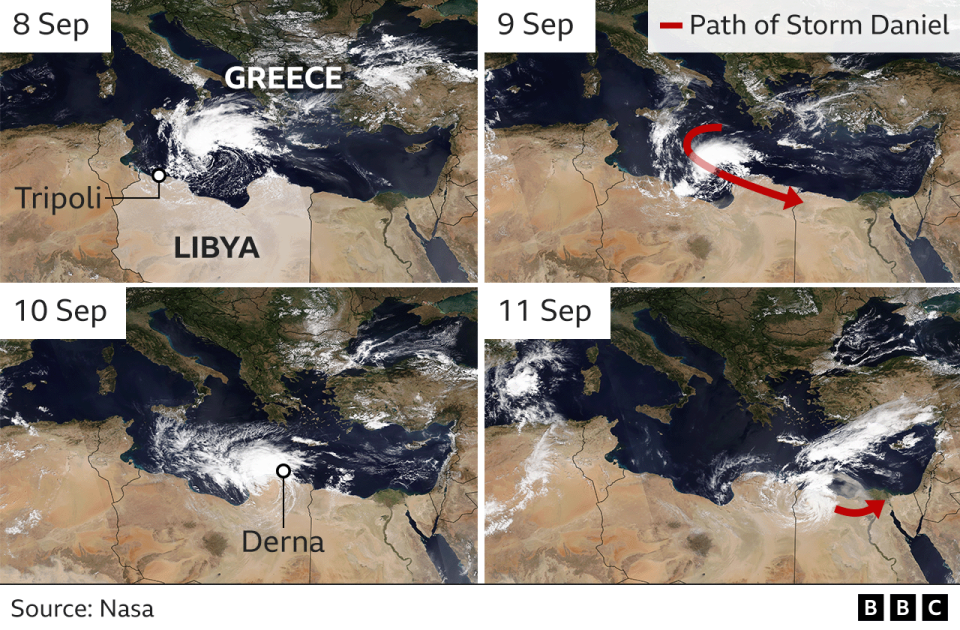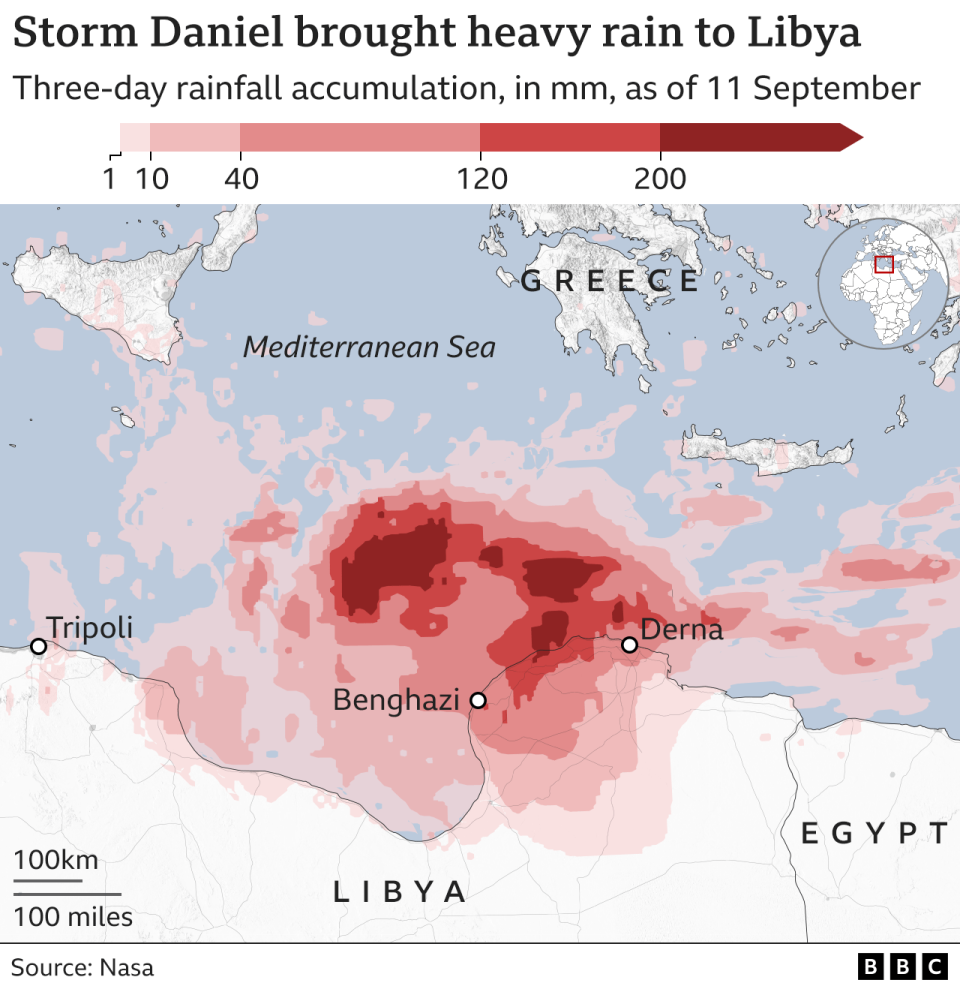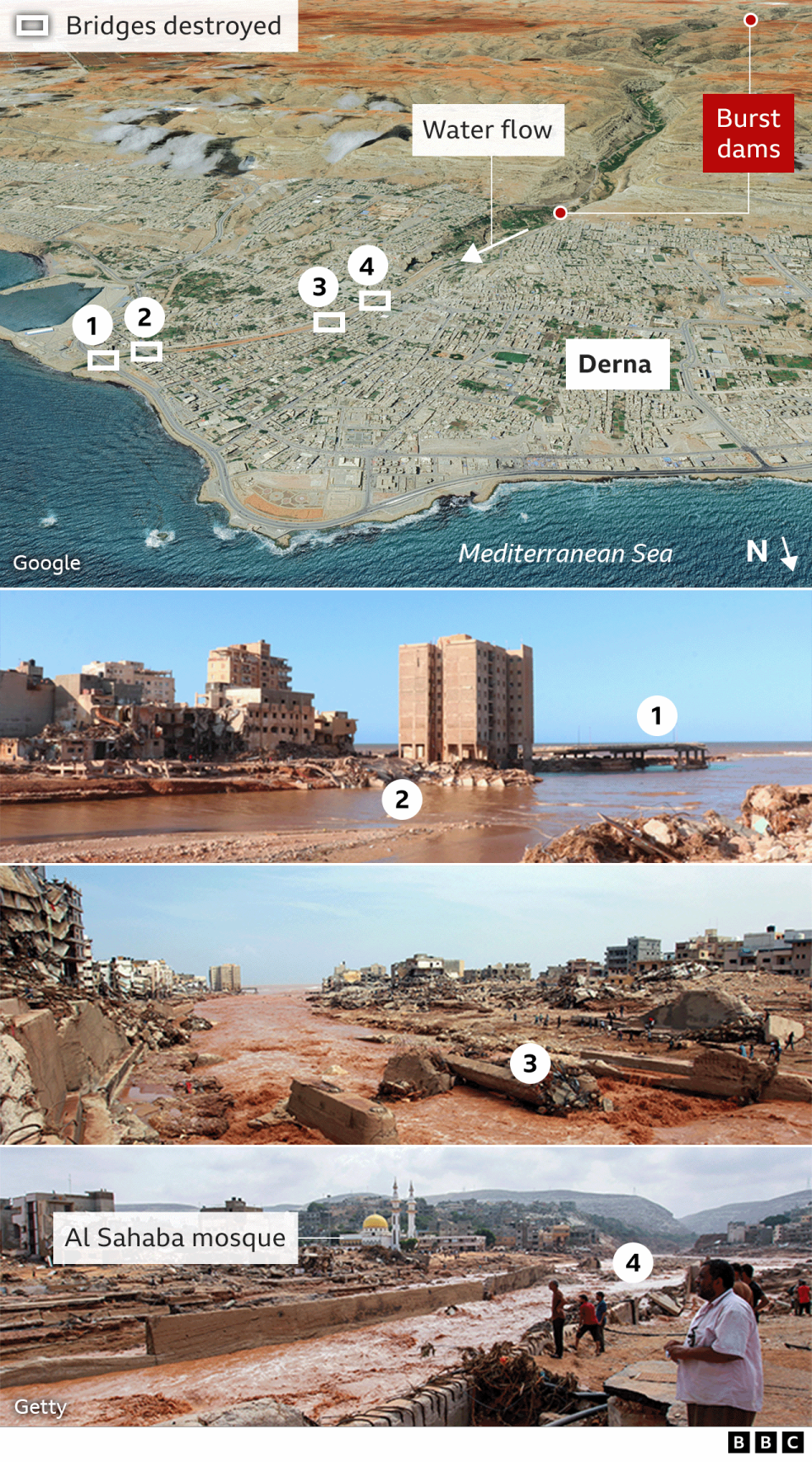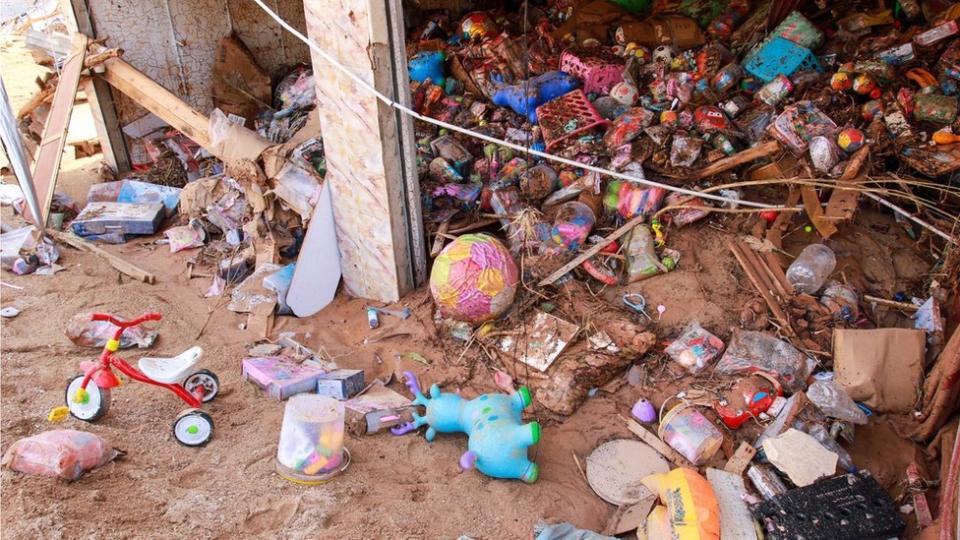More than 5,000 people are known to have died and thousands more are missing after devastating floods swept through the Libyan port city of Derna.
Entire families were washed away, according to a Libyan journalist who has been speaking to survivors in the city, and who described the situation as “beyond catastrophic”.
The water was brought by Storm Daniel – a Mediterranean hurricane-like system known as a medicane that had already caused extensive flooding in Greece – which reached Libya on Sunday.

Satellite data shows how much rain the latest medicane brought to the region, which normally gets an average of 1.5mm of rain in September.

And on the ground the readings were even more stark with 414mm of rainfall recorded as having fallen in the 24 hours before 08:00 on Monday in the nearby town of Bayda in the Jabal Al Akhdar region – the average annual rainfall for the region as a whole is 374mm.
Libya’s National Meteorological Centre says this is a new rainfall record.
It’s too early to attribute the severity of this storm to rising global temperatures with certainty. However, climate change is thought to be increasing the frequency of the strongest medicanes, and Prof Liz Stephens, an expert in climate risks and resilience at Reading University, says there is confidence it is supercharging the rainfall associated with such storms.
Two dams overwhelmed
The Wadi Derna river, which runs from the mountains, through the city and into the Mediterranean, is dry for much of the year but the heavy rain overwhelmed two dams and destroyed several bridges.
Residents, who had been ordered to stay in their homes by the local authorities, reported hearing a loud blast before the city was engulfed in water.
“The dams would have held back the water initially, with their failure potentially releasing all the water in one go. The debris caught up in the floodwaters would have added to the destructive power,” says Prof Stephens.

Experts who have spoken to BBC Verify say it’s too early to know whether the extreme rainfall was simply too much for the dams to handle or whether the condition of the structures also played a role.
Based on their observations, the dams are likely to be rockfill structures – made from dumped and compacted soil or rocks – which is not as strong as concrete,
“These dams are susceptible to overtopping [when water exceeds a dam’s capacity] and while concrete dams can survive overtopping, rockfill dams usually cannot,” says Exeter University’s Prof Dragan Savic, an expert in hydraulic engineering.
It appears that the upper dam failed first, according to structural engineer Andrew Barr.
He says the water then probably flowed down the rocky river valley towards the lower dam, overwhelming it, resulting in the flooding of the city which is trapped between mountains and the sea.
It was “like a tsunami”, Hisham Chkiouat, civil aviation minister for Libya’s eastern administration, told BBC Newshour after he visited the city, adding: “A massive neighbourhood has been destroyed.”
And speaking to Reuters news agency he said the “sea is constantly dumping dozens of bodies”.
As rescue efforts in the city continue, Libyan journalist Johr Ali, who has spoken to survivors in the city, tells the BBC: “People are hearing the cries of babies underground, they don’t know how to get to them.”
“People are using shovels to get the bodies from underneath the ground, they are using their own hands. They all say it’s like doomsday,” Mr Ali reported.




Produced by Chris Clayton, Mike Hills, Paul Sargeant, Tural Ahmedzade, Kady Wardell, Gerry Fletcher, Filipa Silverio and Erwan Rivault.

What do you want BBC Verify to investigate?
